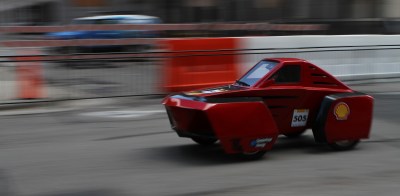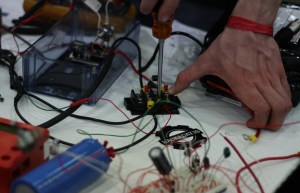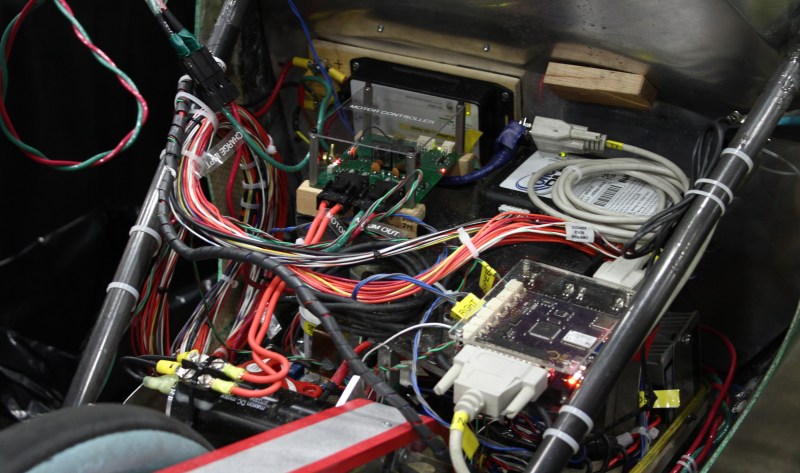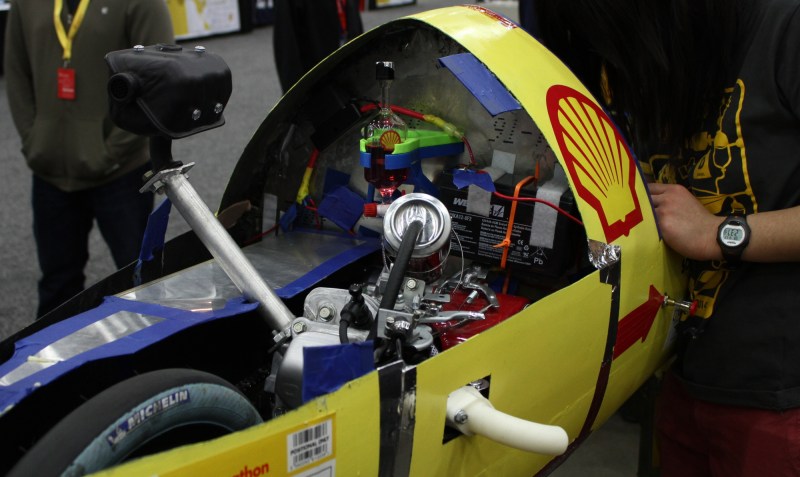zero hedge - A week ago when observing the latest GM deliveries, we noticed something troubling:
Here is the unpleasant detail for a car that five years ago was among the biggest hopes for the recently bankrupt auto maker:

It was thus inevitable that the car which first went on sale in 2010 amid very high expectations, and whose lackluster sales of 70,000 to date, far below initial company forecasts amid low gasoline prices and the release of more capable electric models from competitors, was about to be mothballed. Today Reuters confirmed as much when it reported that GM will "halt production of the Chevrolet Volt electric car for the summer to whittle down about seven months of unsold inventory and smooth the way for the next generation of the plug-in hybrid sedan."
Production of the current model, which costs $34,000 and up before federal tax credits, will halt early next month, the Detroit auto maker has said. It will be replaced by a 2016 model with a sleeker design and up to 50 miles range on an electric charge. That second generation Volt will go into production at the end of the summer.
Alas, absent a surge in the price of gasoline back into the high $3 range, the prospects of this "upgrade" will hardly be any better.
From Reuters:
The production hiatus comes after a first quarter in which sales fell well behind Nissan Motor Co.'s Leaf electric car in the U.S. GM sold 1,874 Volts during the three-month period, equivalent to the number of Silverado pickups sold in a day, and in contrast to Nissan's 4,085 Leaf sales. Volt stocks are enough to last 210 days, or until November, at their March sales pace, according to researcher Autodata Corp. Car makers generally like to have about 60 days of inventory at dealers.
Reinvigorating consumer interest in the Volt, a car that has a battery and a small gasoline motor, is a top priority for GM as it prepares to release its fully-electric Bolt sedan, say analysts. Volt development consumed more than a billion dollars but has failed to generate a fraction of the buzz that Tesla Motors Inc. has with its pricier Model S luxury electric car or Toyota Motor Corp. with its Prius family.
According to Pam Fletcher, GM's chief electric-vehicle engineer, Chevrolet executives have kept in close contact with initial Volt buyers, polling them on issues spanning quality to performance to design. One key thing it learned, "People said they didn't want a science experiment," Ms. Fletcher said.
That's odd because the buyers of Tesla's own electric car have no problem with that particular science experiment. Then again, when it comes to electric cars, the Apple marketing scheme is far more applicable: the price should be higher, not lower, because a "science experiment" is acceptable as long as it also happens to be a status symbol, A very expensive one preferably, which is the primary reason why there is still any demand for Teslas around the globe.
That, however, has not dawned on GM's marketing department just yet, although there is hope: according to Reuters, the marketing plan for the next generation Volt is still coming together said Chevrolet Car Marketing Director Steve Majoros. GM plans to address the confusion around a battery-powered car that has a gasoline engine. Dealers will get "significant marketing support" for the 2016 model. "We will be out publicly and big," he added.
Brett Hedrick, owner of Hedrick's Chevrolet in Clovis, Calif., said he is in favor of greater support from GM for Volt sales, but said electric cars won't catch on until they make financial sense. When gas prices went down consumers weren't "as conscious about conserving," he said.
Mr. Hedrick said his current challenge is selling the Volt inventory on his lot before the new model arrives—something he hopes GM will support.
Chelsea Sexton, a Los Angeles-based electric car advocate, said while GM made a lot of waves when it first launched Volt, it lost soon ground to other auto makers who released fully electric vehicles.
She said GM lately has reached out less often to enthusiasts, noting talks with herself and others "have largely fallen off…as those conversations fall off, it's hard to tell where they stand in the long term."
Dealers say GM has to regain mind share in electric cars. "We just don't have presence in the space currently," said Jamaal McCoy, general manager of Findlay Chevrolet in Las Vegas. "When someone thinks of an electric vehicle they don't think of Chevrolet; they think Toyota or Tesla."
... For now. Because Tesla's electric "supremacy" days may well be numbered with the arrival of the BMW i8 and other ultra high-end competition. Because when it comes to novelty electric cars which despite the best intentions and efforts of their makers simply refuse to become mainstream, one has to differentiate in other ways. For Tesla that something is appealing to the buyer's vanity and desire to show off their wallet. However, that success of such a strategy is limited as the recent drop in Tesla sales in China is confirming.
As for the current iteration of Chevy Volt, it has finally met its fate on the recycling lot, which as many had predicted long ago, will be right next to that other GM "shock and awe" concept: the infamous Pontiac Aztek.





 The event has two categories that vehicles compete in: prototype vehicles that compete for the highest fuel efficiency and "urban concept" vehicles that are more focused on normal driving environments and look slightly closer to street-legal vehicles. Cars in both categories can be fully electric or powered by gas, diesel, compressed natural gas, or other alternative fuels. Vehicles drive around a 0.9 mile track that weaves through downtown Detroit and the efficiency of each vehicle is measured as they complete a fixed number of laps around the track.
The event has two categories that vehicles compete in: prototype vehicles that compete for the highest fuel efficiency and "urban concept" vehicles that are more focused on normal driving environments and look slightly closer to street-legal vehicles. Cars in both categories can be fully electric or powered by gas, diesel, compressed natural gas, or other alternative fuels. Vehicles drive around a 0.9 mile track that weaves through downtown Detroit and the efficiency of each vehicle is measured as they complete a fixed number of laps around the track. Even though many of these teams are backed by universities with hefty amounts of funding, the skill sets of individual team members have a huge impact on a team's success. I talked to a team from Ohio whose electric vehicle team was made up entirely of mechanical engineers — and they were actually able to put together a fully functional vehicle.
Even though many of these teams are backed by universities with hefty amounts of funding, the skill sets of individual team members have a huge impact on a team's success. I talked to a team from Ohio whose electric vehicle team was made up entirely of mechanical engineers — and they were actually able to put together a fully functional vehicle.
 Most teams start out with an off-the-shelf lawnmower engine or something similar in size. Some teams just run the engines stock, while others add mechanical or electronic fuel injection and fabricate their own cylinders and pistons. Teams with stock engines often perform surprisingly well, since a ton of efficiency is gained and lost in the aerodynamics of the car alone.
Most teams start out with an off-the-shelf lawnmower engine or something similar in size. Some teams just run the engines stock, while others add mechanical or electronic fuel injection and fabricate their own cylinders and pistons. Teams with stock engines often perform surprisingly well, since a ton of efficiency is gained and lost in the aerodynamics of the car alone.













 Presented by: Yifang Zhu, Ph.D., UCLA Fielding School of Public Health, University of California, Los Angeles
Presented by: Yifang Zhu, Ph.D., UCLA Fielding School of Public Health, University of California, Los Angeles

